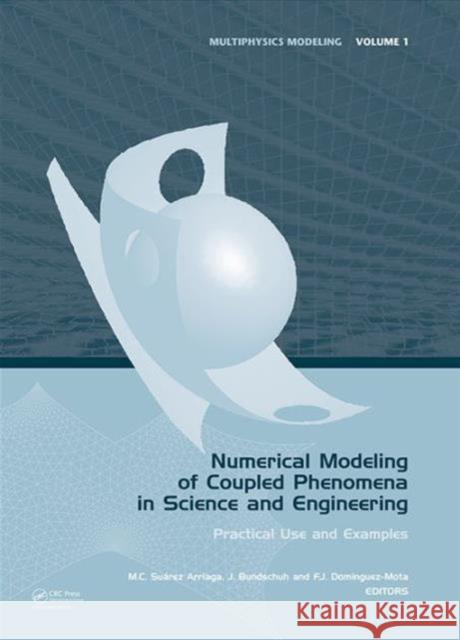Numerical Modeling of Coupled Phenomena in Science and Engineering: Practical Use and Examples » książka
Numerical Modeling of Coupled Phenomena in Science and Engineering: Practical Use and Examples
ISBN-13: 9780415476287 / Angielski / Twarda / 2008 / 496 str.
Numerical Modeling of Coupled Phenomena in Science and Engineering: Practical Use and Examples
ISBN-13: 9780415476287 / Angielski / Twarda / 2008 / 496 str.
(netto: 1066,28 VAT: 5%)
Najniższa cena z 30 dni: 1057,85
ok. 22 dni roboczych
Bez gwarancji dostawy przed świętami
Darmowa dostawa!
Mathematics is a universal language. Differential equations, mathematical modeling, numerical methods and computation form the underlying infrastructure of engineering and the sciences. In this context mathematical modeling is a very powerful tool for studying engineering problems, natural systems and human society. This interdisciplinary book contains a comprehensive overview, including practical examples, of the progress achieved to date in the modeling of coupled phenomena, computational mathematics and mechanics, heat transfer, fluid-structure interactions, biomechanics, and the flow of mass and energy in porous media. Numerical subjects such as grid generation, optimization, finite elements, finite differences, spectral methods, boundary elements, finite volumes and meshless methods are also discussed in detail using real examples. The book provides a thorough presentation of the existing numerical techniques with specific applications to concrete, practical topics. The models and solutions presented here describe various systems: mechanical, biological, geophysical, technical, ecological, etc. The book is organized in thirty six chapters, each written by distinguished experts in their respective fields. The topics presented cover the current state of knowledge in numerical engineering practice including recent and ongoing developments and the presentation of new ideas for future research on applied computational engineering mathematics. The book will be of interest to scientists working in engineering (structural, civil, mechanical), geology, geophysics, aquifer research, petroleum engineering, applied mathematics, and physics, as well as students in any of these areas.
Mathematics is a universal language. Differential equations, mathematical modeling, numerical methods and computation form the deep infrastructure of engineering and sciences. In this context mathematical modeling is a very powerful tool for studying engineering, natural systems and human society. This interdisciplinary book contains a comprehensive overview of the progress achieved up to date in the modelling of coupled phenomena, computational mathematics and mechanics, heat transfer, fluid-structure interactions, biomechanics, flow of mass and energy in porous media. These are all among the different topics covered in this book through completely solved practical problems. Numerical subjects such as grid generation, optimization, finite elements, finite differences, spectral methods, boundary elements, finite volumes and meshless methods are also discussed in detail using real examples. The book provides a thorough presentation of the existing worldwide numerical techniques, but applied to concrete, useful topics. The models and solutions here presented describe various systems, mechanical, biological, geophysical, technical, ecological, etc. The book is organized in thirty six chapters written by distinguished experts in each one of the different fields covered in its pages. The aim is to present the current state of knowledge in numerical engineering practice, recent and ongoing developments with the projection of new ideas for future research on applied computational engineering mathematics. The audience of this book are people working on any branch of engineering: structural, civil, mechanics, geology, geophysics, aquifers, petroleum reservoirs, applied mathematicians, physicists, other scientists and students of any of these areas. They will find in this book the most recent advances in the different engineering topics covered.











